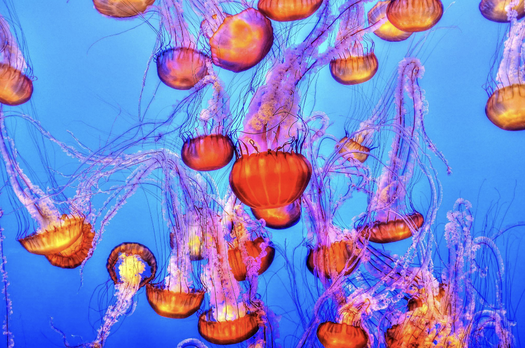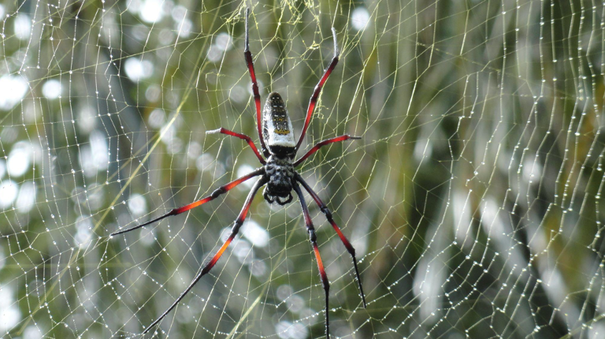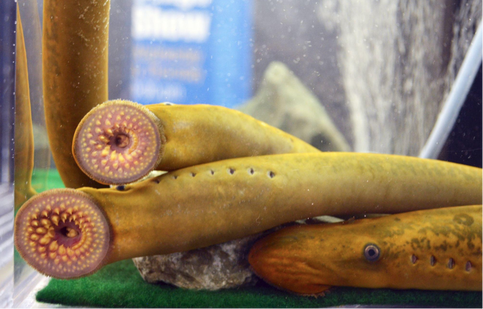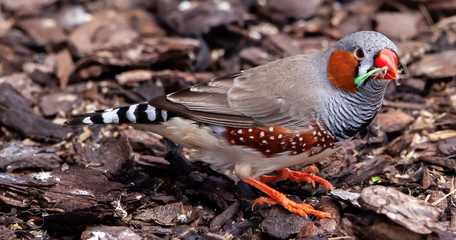|
Modern times and the latest human routine is something that has pushed us all into a swirl of things that has only caused us stress and thus has increased the number of diseases. Nature; A Self Healing Experience
It has been reported that being in nature and establishing a connection with its being is what can cure you in more ways than you might have imagined. At the center of all things natural is when a person is able to not only reduce his or her anger but also take the mind away from all the hassle of the world. There are several other diminished and doomed traits whose severity level is also reduced when a person maintains a healthy connection with nature. It is not only the emotional state of an individual that gets better tenfold when a person resonates with something bigger than just world stress and the drastic impacts of deadlines. It is also the physical health and wellbeing of a person that is improved. Some of the diseases that can get cured by being in nature are as follows:
But it is not just larger-than-life things that have a profound impact on human nature. Small gestures and small efforts can also make quite the difference. Such as having a small plant in your office space or balcony can increase your well-being and can also diminish the power of stress and anxiety on the body. Soothe the Soreness with Nature The emotional pain and hurt that we might feel from life and its ever-growing pressure can get lowered if we try to connect more with the reality of us all, and that is nature. The human body is programmed to find comfort, solace, and content in nature. Where the green of trees makes you feel refreshed, the full-color spectrum of flowers brings joy to the senses, and the rustic wood distracts you from the feeling of void and detachment. It is not just the end results of a poet's imagination or the mighty trail of a bard’s song, and this is something that has been proven as well as backed by science. Robert Ulrich, who was the physician of this study, took two groups of patients who had undergone gallbladder surgery. Half of them were prescribed to look at the wall, and the other half were given a tree to look at. The end of this study was that those who had to look at the tress ended up bearing and tolerating pain much better than those who didn’t. The nurses also took into account that those patients ended up having a larger spectrum of pain tolerance, and the negative effects were also diminished. The time they spent in the hospital was also reduced. This approach is now also in context and has been extended to a larger and wide-scale where nature and plants are being placed inside the hotel rooms.
0 Comments
The idea of living forever has always fascinated humans, with religions across time exploring ways to achieve it. Scientists have explored many different avenues towards eternal life, from the planets in our solar system and cryogenics on Earth. But what if there was an easier way out? A jellyfish may hold this secret behind its beautiful bioluminescent cloak - in case they ever get into trouble with what's happening on Earth.
Jellyfish are often thought of as "medusas,"; creatures that have the second stage in their life cycle. They spend this phase drifting around with trailing tentacles, looking just like an opaque balloon on floats! There’s an unusual jellyfish species, Turritopsis dohrnii, which can seemingly escape from their deaths altogether. Despite only being three millimeters in diameter on average, these tiny invertebrates can roll back their biological clock, transforming from medusae back into the polyp stage when injured or starving to death - meaning it could potentially live forever! A lot of people think that it's impossible for an animal like this, but if you take into account its ability to escape death when necessary, then even though we may not know all the exact details behind how these jellies do it, it seems possible after all. There's no stopping you if your life goal was survival through regeneration like theirs! The age of immortal jellyfish The age of the immortal jellyfish is a bit more complicated than it seems, but it can live potentially forever. It's been floating through oceans long before the dinosaurs went extinct 66 million years ago and can live to see another 66 or so! The most used costume for any Halloween party is a spider. According to Google Trend stats, spider costumes are 87th most searched. These several leg creatures have been long used to make the audience believe that the darkroom on the big cinema screen is real and creepy. For several centuries spiders have been the symbol of creepiness. But hold that thought these spiders are so much more than just an epitome of horror.
What are spiders? Belonging to arachnids, they are a special class of arthropods. Other members of this class are mites, ticks, and scorpions. With more than 45,000 known species of spiders, these arthropods have homes all around the world. They come in a variety of shapes and abilities. Some are cannibals that look like pelicans and some can even jump on demand. The tinnitus spiders are tiny samoan moss spiders and the largest one is goliath birdeater tarantula. It is big enough to feast upon frogs and rodents. The people of the world get into accidents and other traumas, some of which affect their spine, leading to spinal cord injuries (SCI). This damage to the spine leads to other disabilities like paralysis and lifelong back pain. These people with spinal cord injuries are more likely to die early and have a very high chance of being bed-ridden with some other complication of the injury. As for the treatment options, there are not many by traditional conservative medicine. Spine injuries are usually fixed by surgeries, and they, too, don't have a high success rate. So scientists are always on the lookout for some out-of-the-book solution that will help them understand the healing process and resolve the issues patients have been suffering; a treatment with no severe long-term complications, minimal hospital stay, and even minimal chance of relapse of the condition.
From horseshoe crab blood to limb regeneration in Axolotls, many inspirations can be found in marine ecosystems where animals show remarkable healing capacities. Another such example in marine life is lampreys. Sea Lamprey is a non-mammalian model for spinal cord regeneration. Nature has demonstrated successful regeneration for centuries, and Morgan et al. tested this capability by experimenting on sea lampreys. The team discovered that humans share genes with eel-like species that, if activated, could help us reverse spinal cord damage, even paralysis! The horrifying subject The lamprey in Latin means “stone licker” because of their characteristic long funnel-shaped face, with a mouth that pays homage to horror movies. Sea Lampreys are part of a very ancient lineage of the order of jawless fishes and are placed in the superclass of Cyclostomata. But they are not fishes; they belong to an ancient group which means they do not have scales, fins, or gills. Morphological records of this living fossil indicate that its physical features (size, shape, and structure) have been largely unchanged for about 400 million years. 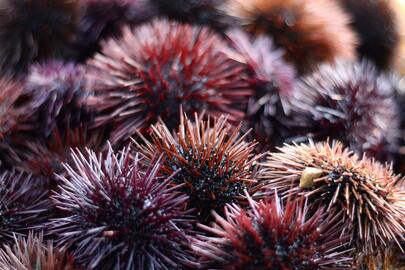 Sonia Kowsar via Unsplash Sonia Kowsar via Unsplash Sea urchins are an animal called Echinoidea that call the ocean bottoms home. They are globular creatures with shells that are covered in spikes. They are sessile and are slow-moving; they move using the tube feet. They usually thrive on algae but can also prey on small sessile beings. They are used by humans in aquariums to control algae. They are also a very popular delicacy around the world. The gonads of the creature are very popular as food. Sea urchins are a novel model for genome study, and their eggs have been used for experimentation as well. They are also studied for their certain characteristics. For example, they do not necessarily fit in the classic definition of aging; they age phenomenally well. These creatures can heal injuries of the spine and regrow their lost appendages. They even retain their healing characteristics throughout their lives. They can even reproduce in their late ages as if they’re still young. At even the micro-level, it has been observed that they do not undergo the age-related telomerase shortening. This study is a new field of research and shows a lot of promise. And above all, the sea urchins have a genome that overlaps with many genes in the human. For example, the gene of a purple sea urchin (Strongylocentrotus purpuratus) was sequenced, and about 23000 genes were found to be common between the sea urchin and humans. These genes are related to ageing disease and chemoreception vision and balance. This research might lead to a greater understanding of vertebrates and might even help us understand the roles of different genes and mechanisms in aging and longevity in humans. Songbirds and humans both learn language by listening to and imitating others! Zebra finches (Taeniopygia guttata) are a very common bird found almost in all parts of Australia. They are native to Australia, but they were also introduced in Puerto Rico and Portugal and can now be found there as well.
Australian zebra finches, which weigh less than half an ounce, are known to be loud singers. But only the male has the singing ability; the male uses his boisterous songs to attract females. However, both males and females can produce calls; they produce about 10 different types of calls. The species is well known for being the first wild bird whose genetic code has been cracked, after the chicken, and some 800 genes have been found, which have seemed to have a link with the song learning. The red-beaked young males usually start vocalization by babbling, much like a human toddler, and learn songs by imitating their elders. Similarities can be found in the songs of these birds, a fact stated by Aristotle over 2,000 years ago in his “Historia Animalium (History of Animals).” The sweet twittering songs comprise only a small number of 3 to 8 distinct syllables; short, buzzy sounds with a distinctive structure and repeat in a fixed order. 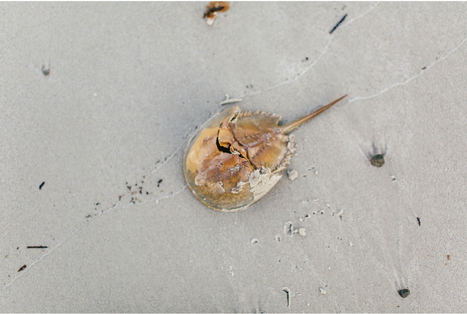 Photo by Michael Browning on Unsplash Photo by Michael Browning on Unsplash Not many species have survived through all the catastrophic Mass Extinctions, but the horseshoe crab did! It has outlived dinosaurs; it has been around for more than 450 Million Years, which is the reason why it is dubbed as The Living Fossil. The horseshoe crab is actually not a crab and also not a crustacean. It is an arthropod that lives in shallow water and muddy pockets. Of its four living species, three are found in Asia and only Limulus polyphemus is found on the Atlantic coast of North America. Why is Limulus Amebocyte Lysate important to humans? The horseshoe crab was used as bait by fishermen and as a fertilizer by farmers. But in recent years, this crab has been found to be the source of an invaluable chemical found in its blood. It is called Limulus Amebocyte Lysate also known as LAL. Limulus comes from the genus name Limulus polyphemus, Amebocyte is cells in the crab’s blood, and the lysate is the extract once Amebocyte has been “degraded.”  Image Source: Carbon Brief Image Source: Carbon Brief Hibernation is a common phenomenon in the animal kingdom and occurs in over 200 species. Species that can hibernate and survive at low temperatures with only food (fat) reserves stored in their body have been fascinating scientists for years. Most species, like the female black bear, can even give birth and lactate while they're in torpor, which a form of hibernation. Then, there is the Arctic ground squirrel (Urocitellus parryii) that has intrigued many scientists for its supercooling type of hibernation. Native to the icy tundra where temperatures dip below zero, the sun barely breaks the horizon, and trees struggle to take root in the icy soil, the arctic squirrel retreats into one meter-deep burrows. 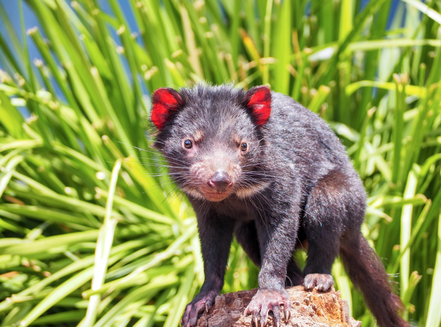 Photo by Kunal Kalra via Unsplash Photo by Kunal Kalra via Unsplash The emblem of the Tasmanian state, the Tasmanian devil (Sarcophilus harrisii), is the largest carnivorous marsupial in the world. It is found on the island of Tasmania, Australia. Fossil evidence suggests that it once occupied the entire Australian mainland some 3,000 years ago. “Devil” was attributed to these animals for their appearance and otherworldly/unearthly screeches at night. These sounds are reflective of fear rather than aggression, however. About the size of the dog, these red-eared devilish creatures can devour medium to large-sized mammals as well as invertebrates with their wide jaws and sharp teeth. However, they serve their ecological role more like scavengers than predators. They feed on carcasses. The nocturnal animal lives in solitary, changing dens every third day of the week, and can travel about 6 miles at night. 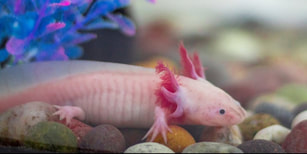 Joaquín Enríquez via Pixabay Joaquín Enríquez via Pixabay Axolotls could help in regeneration! You might be reading this headline for the first time, but it is true. When it comes to regeneration, Urodele Amphibian, better known as Axolotls (Ambystoma mexicanum) are the champions. They don’t form scars on wounds, instead they regrow their lost parts. Scientists are hopeful for human limb regeneration based on this knowledge. Like their striking regeneration ability, they possess distinguished larval features as well. These include a flat body, dorsal fins, three pairs of protruding feathery gills, and a slight grin. They can grow up to one foot. These long-living Mexican salamanders live up to 15 years. Unlike other salamanders that metamorphose into terrestrial amphibians, the fleshy-pink Axolotls defy the biological laws of metamorphosis. They hold onto their juvenile features throughout their adulthood, so they are known as neonates. |
|
|
(833) CMS-LINE
(833) 267-5463 PO Box 13477 Mill Creek, Wa, 98082 © Conservation Made Simple. All rights reserved.
501(c)(3) Non-Profit, Tax ID#: 82-1646340 Copyright © 2021 Conservation Made Simple |


